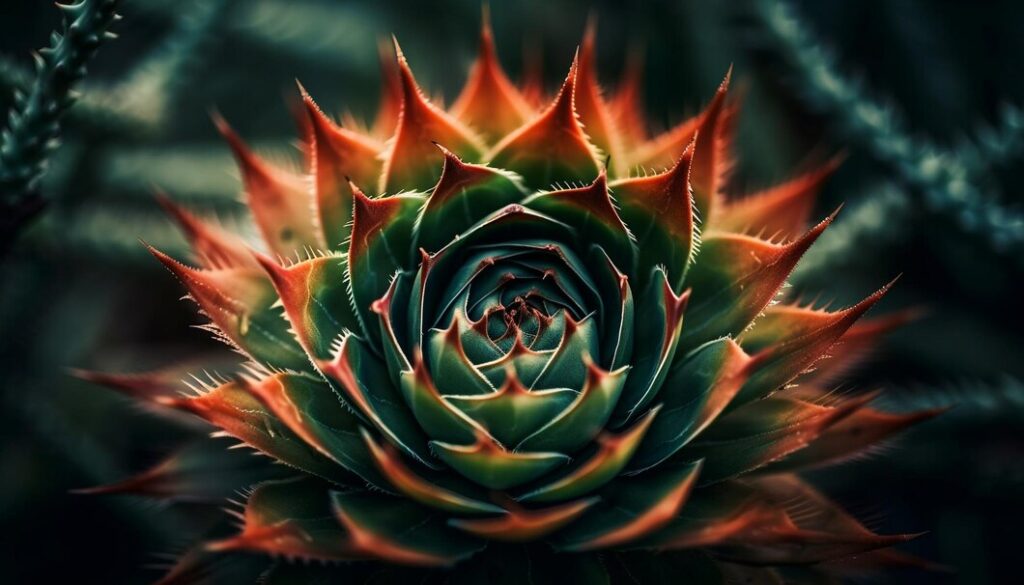Nestled among the intriguing array of succulents, the Devil’s Backbone plant (Pedilanthus tithymaloides) stands out for its distinctive appearance and resilient nature. This captivating plant, known by various names across cultures, boasts fascinating characteristics and cultural significance. Let’s delve into the world of this unique succulent, exploring its origins, care tips, symbolism, and more.
Origin and Natural Habitat
The Devil’s Backbone plant is native to tropical regions of Central America and the Caribbean. It thrives in warm climates and is often found in the wild growing in rocky, arid areas. This plant has adapted to diverse environmental conditions, showcasing its ability to survive in both humid and dry landscapes.
Leaf Structure
One of the most striking features of the Devil’s Backbone is its zigzagging stem, resembling the spine of a mythical creature. The leaves are typically elongated and leathery, arranged alternately along the stem.
Flower Appearance
Although less known for its flowers, the Devil’s Backbone produces small, inconspicuous blooms. These flowers, often greenish-yellow in color, emerge from the stem’s tips, adding a subtle charm to the plant.
Cultural Significance
The Devil’s Backbone holds cultural importance in various traditions. Historically, indigenous communities used parts of this plant for medicinal purposes. It also carries symbolic meanings, representing resilience and endurance in folklore.
Growing Devil’s Backbone Indoors
Devil’s Backbone is an excellent choice for indoor gardening due to its adaptability. Provide it with bright, indirect light and well-draining soil. Water sparingly, allowing the soil to dry out between waterings. Propagation is relatively easy through stem cuttings.
Common Varieties
Several cultivated varieties of Devil’s Backbone exist, showcasing diverse leaf shapes and colors. Varieties like ‘Variegatus’ feature striking variegated leaves, adding visual interest to indoor spaces.
Care and Maintenance Tips
Regular pruning helps maintain the plant’s shape and encourages bushier growth. Watch out for common pests like aphids and spider mites, especially in indoor environments.
Health Benefits and Risks
While Devil’s Backbone has medicinal uses, some individuals may experience skin irritation or allergies upon contact. It’s essential to handle this plant with care and be aware of its potential effects.
Decorative Uses in Landscaping
In landscaping, Devil’s Backbone shines in container gardens and rock gardens. Its architectural form and low maintenance make it a popular choice for adding greenery to outdoor spaces.
Devil’s Backbone in Folklore and Mythology
This plant has intriguing associations in folklore, often linked to supernatural entities or legendary creatures. Its unique appearance has sparked imaginations across cultures, contributing to its mystique.
Other Names and Nicknames
Devil’s Backbone goes by several names, including Jacob’s Ladder, Zigzag Plant, and Redbird Cactus. These names reflect different aspects of its appearance or cultural interpretations.
Environmental Adaptations
The Devil’s Backbone’s ability to thrive in diverse conditions makes it a resilient addition to gardens. It can tolerate periods of neglect and is well-suited to xeriscaping.
Challenges in Growing Devil’s Backbone

Despite its adaptability, Devil’s Backbone may suffer from overwatering or insufficient light. Like many succulents, it requires a delicate balance of care to flourish indoors.
Conclusion
Devil’s Backbone is more than just a decorative plant—it’s a symbol of resilience and a testament to nature’s adaptability. Whether indoors or outdoors, cultivating this intriguing succulent adds a touch of exotic allure to any space.
FAQs
Is Devil’s Backbone plant toxic to pets?
While not highly toxic, Devil’s Backbone may cause mild irritation if ingested by pets. It’s best to keep it out of reach of curious animals.
How often should I water Devil’s Backbone?
Water sparingly, allowing the soil to dry out between waterings. Frequency depends on environmental conditions.
Can Devil’s Backbone survive in low light conditions?
While it prefers bright, indirect light, Devil’s Backbone can tolerate moderate shade but may not thrive in low light.
What is the best soil mix for Devil’s Backbone?
Use a well-draining cactus or succulent mix to ensure proper drainage and prevent root rot.
How do I propagate Devil’s Backbone?
Propagate through stem cuttings placed in well-draining soil. Keep the soil lightly moist until new roots develop.
